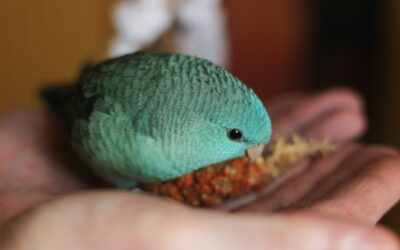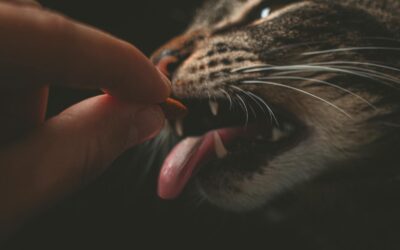Why do dogs like being pet?
Who doesn’t love curling up with their dog for a belly rub or some head scratches? As a dog owner, you know the joy and connection that comes from these moments. Humans and dogs have a unique bond, and petting is one of the simplest ways to strengthen it.
But have you ever wondered why dogs love being pet? There’s actually a lot going on biologically and emotionally when you give those scritches. This blog explores why petting is such a delightful experience for dogs, how to do it the right way, and the benefits it brings to both you and your furry friend.

Understanding Canine Affection
Social Creatures with a Need for Connection
Dogs are inherently social creatures. Domesticated over thousands of years, dogs have developed a deep bond with humans. Petting is a physical manifestation of that bond—it’s how dogs and humans communicate affection.
Alongside play and verbal praise, petting serves as a key way to interact with your dog. Understanding your dog’s behavior is crucial to ensure they are comfortable and enjoying the interaction.
Many dogs enjoy the simple act of being physically close to their favorite humans, and petting is the perfect bridge. It’s a comforting ritual, fostering a sense of security and love.
The Role of Hormones
Science backs up the benefits of petting for dogs (and humans!). When you pet your dog, both you and your pup release oxytocin, the hormone associated with bonding and affection.
This is often referred to as the “love hormone,” as it plays a key part in deepening connections. It’s the same hormone that strengthens bonds between mothers and their newborns.
For dogs, oxytocin not only enhances their relationship with you but also reduces feelings of stress or anxiety.

What Makes Dogs Enjoy Petting?
Individual Preferences
Like humans, dogs have individual preferences when it comes to how they receive affection. Some dogs love belly rubs, while others may prefer gentle scratches on their chin or behind their ears, depending on their dog’s body preferences.
A dog’s enjoyment often depends on their unique personality and past experiences, so paying attention to their signals is crucial.
Positive Associations
Petting often becomes associated with positive experiences. For example, dogs might link petting to times when they’ve done something good, such as during a training session. It can reinforce desirable behaviors and serve as a reward.

Reading a Dog’s Body Language
To ensure your dog truly enjoys petting, it’s important to understand their dog’s body language.
Good Signs
Dogs communicate through their bodies, and relaxed body language is a great indicator that they’re comfortable and enjoying your touch. Look out for these signs as you pet your furry friend:
- Relaxed body posture with soft, wagging tails.
- Loose lips and a slightly open mouth.
- Soft eyes that appear calm and trusting.
When your dog leans in or moves closer to you, it’s a good sign they’re happy with the attention.
Other Signs to Watch
Some cues can signal your dog has had enough or isn’t comfortable being touched in a certain area:
- A tucked tail or lip licking indicates your dog may be stressed or scared.
- Avoiding eye contact or stiff, tense movements are signs they’d like some space.
- A dog rolling away or shifting could be their way of disengaging.
Listening to these signals and respecting boundaries ensures a positive experience for both you and your pet.
How to Recognize a Dog’s Preferences
Recognizing a dog’s preferences is crucial to ensure a positive and enjoyable petting experience for both you and your dog. Here are some tips to help you identify your dog’s likes and dislikes:
- Observe Your Dog’s Body Language: Pay close attention to your dog’s body language. A relaxed body posture, soft facial expressions, and a wagging tail are signs that your dog is comfortable and enjoying the petting.
- Watch for Signs of Enjoyment: If your dog is leaning into your touch, nuzzling their head against you, or sighing contentedly, these are clear indicators that they are enjoying the petting session.
- Look for Signs of Discomfort: On the flip side, if your dog pulls away, tenses up, or shows avoidance behaviors like yawning or licking their lips, it’s a sign they might be uncomfortable or stressed.
- Experiment with Different Touches: Try various types of touch, such as gentle stroking, scratching, or massaging, to see what your dog prefers. Each dog has unique preferences, so it’s important to find what makes your furry friend happiest.
- Pay Attention to Vocal Cues: If your dog starts whining, growling, or showing other signs of distress, it’s likely they are not enjoying the petting. Always listen to these vocal cues and adjust your approach accordingly.
By paying attention to these cues, you can tailor your petting style to your dog’s individual preferences and ensure a positive experience for both you and your furry friend.

Petting Techniques and Tips
How to Pet a Dog Properly
- Approach Gently: When meeting a dog, always approach slowly and allow them to sniff your hand first.
- Start with Light Strokes: Begin with soft, gentle strokes along the dog’s body—avoid sudden movements.
- Observe Their Reactions: Pay attention to their body language; if they seem uncomfortable, stop petting.
- Adjust As Needed: Every dog is different, so tailor your petting to their preferences as you get to know them better.
Avoid Sensitive Areas
Some parts of a dog’s body can feel uncomfortable or even painful to touch:
- Avoid petting the dog’s head (top of the skull), as many dogs don’t enjoy it.
- Be cautious around the dog’s ears and tail, which are extra sensitive and packed with nerve endings.
- Paws and feet should be handled gently, as dogs are often protective of these areas.

Where Do Dogs Like to Be Pet?
While preferences vary, there are certain areas most dogs enjoy:
- Chest and shoulders are common favorites.
- The base of the tail is another spot dogs often enjoy being rubbed.
- Some dogs love being scratched along their back, neck, or under their chin.
Pay attention to individual preferences—your dog will show you exactly where they like to be pet most!
While some dogs love belly rubs, it’s important to note that when a dog rolls onto their back, it doesn’t always mean they want a belly rub; it could be a sign of play invitation, submission, or comfort in warm weather.
The Benefits of Petting
A Calming Effect
Petting is a simple yet effective way to calm a stressed or anxious dog. The soothing action not only relaxes their body but also lowers their heart rate.
Reinforcing Positive Behavior
When done as part of a reward system, petting can reinforce positive behavior during training. It shows your dog that good behavior is acknowledged and appreciated.
Strengthening Bonds
Regular petting fosters a deeper emotional bond between dog owners and their pets. It’s a wonderful way to show love and receive it back tenfold.
Petting and Behavioral Issues
Petting can play a part in addressing anxiety or fear-related behavior.
Gentle, consistent petting can help your dog feel more secure over time, and it’s especially helpful for nervous shelter dogs or puppies gaining socialization skills.
Can Petting Help with Anxiety and Fear?
Petting can be a powerful tool in helping dogs overcome anxiety and fear. Here are some ways petting can help:
- Reduces Stress and Anxiety: Petting can help calm a dog’s nervous system, reducing stress and anxiety. The gentle, rhythmic motion of petting can have a soothing effect, helping your dog feel more relaxed.
- Provides Comfort and Reassurance: Physical touch can provide a sense of comfort and reassurance, helping to alleviate fear and anxiety. When a dog feels your gentle touch, it can create a sense of safety and security.
- Builds Trust: Regular petting can help build trust between you and your dog, making them more confident and secure. This is especially important for dogs that have had negative experiences in the past.
- Distracts from Triggers: Petting can be used as a distraction technique to help dogs focus on the touch rather than the trigger causing anxiety or fear. This can be particularly useful in situations where your dog might feel overwhelmed.
However, it’s essential to remember that every dog is different, and what works for one dog may not work for another. If your dog is experiencing anxiety or fear, it’s best to consult with a professional dog trainer or behaviorist for personalized guidance.

How Often Should You Pet Your Dog?
There’s no universal rule for how often to pet your dog—it depends on their personality and your mutual bond. While some dogs thrive on frequent affection, others prefer a little more independence.
The key is to listen to their needs. A happy dog will always come back for more when the bond and trust are there.
Building a Stronger Bond as a Pet Parent
Petting is just one aspect of being a great pet owner. If you want to ensure your dog is happy and healthy in every aspect of their life, professional care can help.
Companies like Kate’s K9 Pet Care specialize in tailoring care to individual pets, ensuring their physical and emotional needs are met. Whether it’s dog walking, sitting, or something more specialized, a little extra help goes a long way in keeping your pup content.
Remember, your dog deserves all the love and attention you can give them. Pet them often, pet them right, and savor every wag of their tail in response.

Conclusion | Why Do Dogs Like Being Pet
Petting dogs can be a wonderful way to strengthen the bond between you and your furry friend. By understanding why dogs enjoy being petted, recognizing their preferences, and using petting as a tool to help with anxiety and fear, you can create a positive and enjoyable experience for both you and your dog.
Remember to always pay attention to your dog’s body language and vocal cues, and adjust your petting style accordingly. With patience, understanding, and gentle touch, you can build a lifelong connection with your dog.






